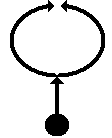
"Orgonomic functionalism," also called "energetic functionalism" or simply "functionalism," was Reich's term for his "non-mechanistic" and allegedy "non-mystical" way of thinking and of doing science. It grew out of Reich's affinity for dialectic materialism. It has nothing whatsoever to do with the mind/body philosophy of Functionalism developed by Putnam, Fodor, Smart, and Wittgenstein, and should not be confused with it.
In the glossary that appears in the front of Selected Writings: An Introduction to Orgonomy, Reich defined orgonomic functionalism as:
"The functional thought technique that guides clinical and experimental orgone research. The guiding principle is the identity of variations in their common functioning principle (CFP). This thought technique evolved in the course of the study of human character formation and led to the discovery of the organismic and cosmic orgone energy, thereby proving itself to be the correct mirroring of both living and nonliving basic natural processes."It's difficult to pin down what Reich meant by "the identity of variations in their common functioning principle." In fact, Reich would probably have argued that any attempt to get a "precise" definition of orgonomic functionalism or "common functioning principle" would in fact be symptomatic of the "mechanistic rigidity" that orgonomic functionalism was trying to overcome in the first place! We have to turn to Reich's examples.
Reich's examples of orgonomic functionalism usually involved "antithetical functional pairs" of concepts. This idea was rooted very strongly in dialectic materialism. Reich would usually draw a symbol that looked something like this:
and then label the two curving arrows on top with two opposing ideas, and the big dot at the bottom with those two ideas' "common functioning principle." For instance, in The Cancer Biopathy, chapter II, section 3 (p. 35, 1973 trans.), Reich drew the above symbol and wrote "PA" next to the left arrow at the top, "T" next to the right arrow at the top, and "non-living matter A" below the big dot on the bottom. This represented Reich's notion that both PA bions and T-Bacilli came originally from non-living matter through bionous processes, but were diametrically opposed to one another.
— Portion of article yet to be written. —
Reich insisted that orgonomic functionalism was not at all mystical or pseudoscientific:
"Narrow-minded mechanists of natural science reproach functionalism for being 'mystical.' This blame rests on the assumption that those who try to understand mysticism are mystical. The mechanist does not understand emotional processes at all; to him, they are alien experiences, and they are equally foreign as the object of investigation. In a manual of neurology or organ pathology one will look in vain for a study of emotions.[Actually, neurologists have studied emotions. The link between certain emotions and activity in certain regions of the brain is well established.]
The emotions, however, are the experiential material of mysticism. Therefore, the narrow-minded mechanist concludes that those who deal with emotions are mystics. The understanding of emotions is so remote to the mechanist's thinking that there is no room for it in his natural scientific investigation.[I believe there are many "mechanistic" psychologists who would disagree with this.]
Functionalism is simply not capable of overlooking the emotions and can include them in the realm of natural scientific research. The mechanist regards this as 'mysticism' because he confuses mysticism with the study of mysticism."The fact that Reich studied mysticism and mystical characters was not the reason most mainstream scientists regarded Reich's work as "mystical." Mainstream scientists regarded Reich's work as mystical — or, more to the point, as pseudoscientific — because his methods were sloppy, his experimental controls were practically non-existent, and his conclusions were completely unjustified.
— Ether, God and Devil, chapter I
Reich may have failed to notice the "mystical" nature of his orgone energy theories because he associated mysticism with organized religion. Most organized religions preached a moral stance completely at odds with what Reich felt was psychologically healthy. If mysticism always led to such a degree of emotional rigidity, it was paramount to Reich that his system of thought not be mystical. Unfortunately for Reich, calling orgonomic functionalism scientific and non-mystical does not make it scientific and non-mystical, any more than calling a cow a dog makes it a dog.
All in all, Reich's concept of orgonomic functionalism seems little more than an excuse for carelessness in Reich's own experimental method. Anybody who argued that some of Reich's tenets were inconsistent or contradicted one another, or who came up with explanations for Reich's experimental results that did not require orgone energy, could be accused of using "mechanistic" thinking.
Send comments regarding this Web page to:
Roger M. Wilcox.
Main Wilhelm Reich index page |
Roger M. Wilcox's home page